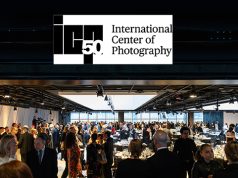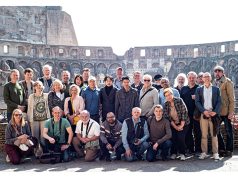
Melville, NY—The Nikon D4 digital SLR builds upon the legacy of the Nikon flagship DSLRs before it, engineered to give professional multimedia photographers “speed and accuracy with unparalleled image quality, low-light capability and Full HD video,” the company announced. With a host of new functions, it’s designed to emphasize rapid response.
Nikon’s 51-point AF system was enhanced for maximum speed in a variety of challenging shooting situations, even at 10 frames per second (fps). Considered the new Nikon flagship, the D4 employs a 3.2-inch, 921K-dot LCD screen and a 16.2 megapixel FX-format (36×23.9mm) CMOS sensor coupled with the latest generation of Nikon’s Expeed 3 image-processing engine “to help produce images and videos with stunning clarity and color.” It’s also said to shoot in even the most challenging environments and lighting conditions with the assistance of Nikon’s 91,000-pixel 3D color matrix meter and an ISO range from 100 to 204,800.
“Speed without accuracy is irrelevant,” said Bo Kajiwara, director, Marketing, Nikon Inc. “The status of a Nikon flagship camera is not given lightly; this next generation of Nikon’s most professional body exceeds the needs of a wide variety of both still and multimedia professionals that rely on Nikon to make their living. Besides overall performance and burst speed, the D4 provides Nikon’s most advanced AF system to date, as well as enhanced workflow speed to give professionals the edge in the field.”
Specs say the D4 is ready to shoot in 0.012 second and captures full-resolution JPEG or RAW files at 10 fps with full AF/AE or up to 11 fps with AF/AE locked. Its Multi-Cam 3500 AF system, the next generation of Nikon’s 51-point AF system, is a fully customizable system that enables users to capture fast-moving subjects and track focus with precision or select a single AF point. The camera aligns 15 cross-type sensors in the center to detect contrast data in both vertical and horizontal planes. In addition to detecting each AF-Nikkor lens with an aperture of f/5.6 or lower, the camera also utilizes nine cross-type sensors that are fully functional when using compatible Nikkor lenses and the TC14E or TC17E teleconverters, or a single cross-type sensor when using compatible Nikkor lenses and the TC20E teleconverter with an aperture value up to f/8. For maximum versatility in situations such as photographing nature or competition from the sidelines, photographers can select multiple AF modes, including normal, wide area, face tracking and subject tracking, to best suit the scene.
Once capture, all image data is funneled through a 16-bit pipeline and written to dual card slots optimized for the latest UDMA-7 CompactFlash cards and the new XQD memory card. The D4 is the first pro camera to harness the capabilities of the durable and compact XQD format, which offers blazing fast write times and extended capacity.
The D4 offers various shooting options: in addition to standard NEF (RAW) files, its shoots smaller, compressed RAW files to ease storage and speed up workflow, and users can capture more dynamic range with in-camera High Dynamic Range (HDR) that merges consecutive exposures. And for deep contrast and further tonality, Active D-Lighting can be activated during shooting for balanced exposures even in backlit scenes.
Other features include: a dedicated button to access Nikon’s picture controls, allowing users to select one of six presets; the ability to record Full HD 1080p video at 30/24fps and 60 fps at 720p, or select H.264 / MPEG-4 AVC format video, which requires less memory capacity, for 20 minutes per clip; full manual control of exposure, shutter speed, aperture and ISO; the ability to stream an uncompressed Full HD signal directly out of the camera by using its HDMI port instead of the CF or XQD card; a stereo headphone jack; high-fidelity audio recording control with audio levels that can be set and monitored on the camera’s LCD; simultaneous live view output without display/simultaneous monitor; time-lapse shooting; and using movie custom settings, recording can be set to be engaged by the shutter release button so users can employ remote accessories to trigger video recording.
The chassis of the Nikon D4 is machined from magnesium alloy and the body is sealed and gasketed for resistance to dirt and moisture, as well as electromagnetic interference. It also houses a bright optical viewfinder with 100% frame coverage and a 400,000-cycle-rated shutter. The camera’s controls were also engineered with a renewed emphasis on speed and functionality, with ergonomic button layouts and a new joystick style sub-selector placed on the camera’s rear for AF point and option selection. Key control buttons on the back of the camera can be illuminated for operation in complete darkness.
Workflow enhancements include the ability to automatically generate IPTC data for images and image sets, a wired Ethernet port and compatibility with the WT-5A wireless file transmitter.
The Nikon D4 ships late February 2012 with an MSRP of $5999.95. nikonusa.com





